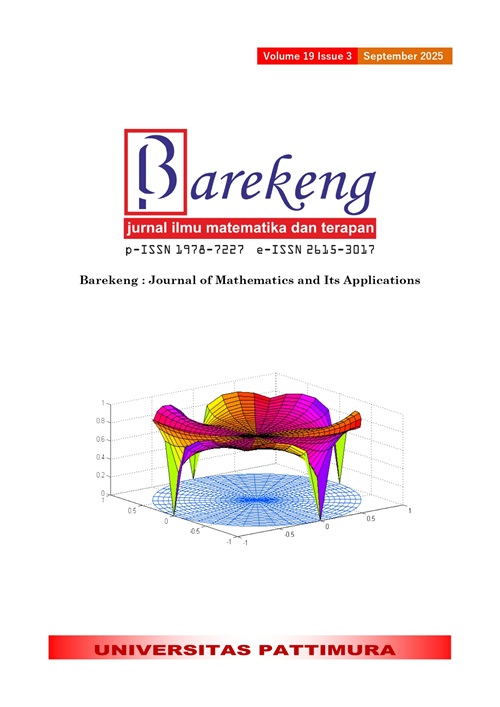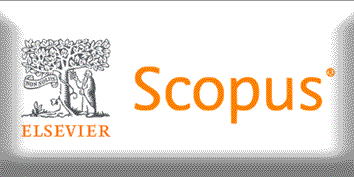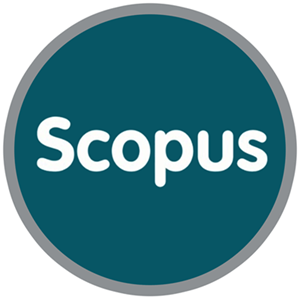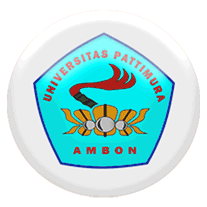SENTIMENT ANALYSIS OF PRE-SERVICE MATHEMATICS TEACHER THROUGH NAÏVE BAYES CLASSIFIER: THE CASE OF MATHEMATICAL ABSTRACTION PROBLEM
Abstract
Mathematical abstraction as part of mathematical thinking process is an important and fundamental process in mathematics and its learning. Pre-service mathematics teachers' experiences and sentiments towards mathematical abstraction can contribute to the way they teach in the future. This study involved 67 Pre-service Mathematics Teachers at one of the Universities in Central Java Province who aimed to analyze their sentiments towards mathematical abstraction problems. The data collection technique used a questionnaire to reveal the Pre-service Mathematics Teacher's response to abstraction problems. Sentiment analysis is used to analyze the responses given which are categorized into positive, negative, or neutral. The technique used in the research is Naïve Bayes Classifier Multinomial. The classification results show 62.9% negative sentiment, 24.2% neutral sentiment, and 12.9% positive sentiment. In addition, the model evaluation results show an accuracy value of 66.7% which indicates the reliability of the model in classifying the sentiments expressed by Pre-service Mathematics Teachers towards mathematical abstraction problems. Pre-service Mathematics Teacher sentiment towards mathematical abstraction problems is dominated by negative sentiment. This shows that the process of mathematical abstraction is still considered a complicated and confusing process.
Downloads
References
H. Chin, C. M. Chew, and M. Suseelan, “MATHEMATICS LEARNING FROM CONCRETE TO ABSTRACT (1968-2021): A BIBLIOMETRIC ANALYSIS,” Participatory Educational Research, vol. 9, no. 4, pp. 445–468, Jul. 2022, doi: https://doi.org/10.17275/per.22.99.9.4.
M. Mitchelmore and P. White, “ABSTRACTION IN MATHEMATICS AND MATHEMATICS LEARNING,” in Proceedings of the 28th Conference of the International Group for the Psychology of Mathematics Education, M. J. Høines and A. B. Fuglestad, Eds., Bergen, Norway: PME, 2004, pp. 329–336.
M. Ding and X. Li, “TRANSITION FROM CONCRETE TO ABSTRACT REPRESENTATIONS: THE DISTRIBUTIVE PROPERTY IN A CHINESE TEXTBOOK SERIES,” Educational Studies in Mathematics, vol. 87, no. 1, pp. 103–121, Sep. 2014, doi: https://doi.org/10.1007/s10649-014-9558-y.
T. Dreyfus, R. Hershkowitz, and B. Schwarz, “THE NESTED EPISTEMIC ACTIONS MODEL FOR ABSTRACTION IN CONTEXT: THEORY AS METHODOLOGICAL TOOL AND METHODOLOGICAL TOOL AS THEORY,” in Approaches to Qualitative Research in Mathematics Education, A. Bikner-Ahsbahs, C. Knipping, and N. Presmeg, Eds., Dordrecht: Springer Netherlands, 2015, pp. 185–217. doi: https://doi.org/10.1007/978-94-017-9181-6_8.
F. Nurhasanah, “MATHEMATICAL ABSTRACTION OF PRE-SERVICE MATHEMATICS TEACHERS IN LEARNING NON-CONVENTIONAL MATHEMATICS CONCEPTS,” Unpublished, Universitas Pendidikan Indonesia, Bandung, 2018.
R. R. Skemp, THE PSYCHOLOGY OF LEARNING MATHEMATICS. New Jersey: Lawrence Erlbaum Associates, 1987.
F. Nurhasanah, Y. S. Kusumah, J. Sabandar, and D. Suryadi, “MATHEMATICAL ABSTRACTION: CONSTRUCTING CONCEPT OF PARALLEL COORDINATES,” in Journal of Physics: Conference Series, 2017. doi: https://doi.org/10.1088/1742-6596/895/1/012076.
V. V. Davydov, “TYPES OF GENERALISATION IN INSTRUCTION: LOGICAL AND PSYCHOLOGICAL PROBLEMS IN THE STRUCTURING OF SCHOOL CURRICULa,” in Soviet studies in mathematics education, vol. 2, J. Kilpatrick, Ed., Reston, VA: National Council of Teachers of Mathematics, 1990.
T. Dreyfus and I. Kidron, “INTRODUCTION TO ABSTRACTION IN CONTEXT (AiC),” in Networking of theories as a research practice in mathematics education networking of theories as a research practice in mathematics education. Advances in mathematics education, A. Bikner-Ahsbahs and S. Prediger, Eds., Springer, 2014, pp. 85–96. doi: https://doi.org/10.1007/978-3-319-05389-9_6.
L. L. Hakim and E. Nurlaelah, “MATHEMATICAL MINDSETS: THE ABSTRACTION IN MATHEMATICAL PROBLEM SOLVING,” J Phys Conf Ser, vol. 1132, p. 012048, Nov. 2018, doi: https://doi.org/10.1088/1742-6596/1132/1/012048.
P. L. Ferrari, “ABSTRACTION IN MATHEMATICS,” Philos Trans R Soc Lond B Biol Sci, vol. 358, no. 1435, pp. 1225–1230, Jul. 2003, doi: https://doi.org/10.1098/rstb.2003.1316.
J. T. Shemwell and D. K. Capps, “LEARNING ABSTRACTION AS A MODELING COMPETENCE,” in Towards a competence-based view on models and modeling in science education, vol. 12, A. Upmeier zu Belzen, D. Krüger, and J. van Driel, Eds., Springer, Cham, 2019, pp. 291–307. doi: https://doi.org/10.1007/978-3-030-30255-9_17.
J. D. Putra, D. Suryadi, and D. Juandi, “MATHEMATICAL ABSTRACTION ABILITY OF PROSPECTIVE MATH TEACHER STUDENTS,” J Phys Conf Ser, vol. 1132, p. 012049, Nov. 2018, doi: https://doi.org/10.1088/1742-6596/1132/1/012049.
L. Jao, “FROM SAILING SHIPS TO SUBTRACTION SYMBOLS: MULTIPLE REPRESENTATIONS TO SUPPORT ABSTRACTION,” International Journal for Mathematics Teaching and Learning, vol. 33, pp. 49–64, 2013.
S. Scristia, D. Dasari, and T. Herman, “SENTIMENT ANALYSIS OF PROSPECTIVE MATHEMATICS TEACHER ON REASONING AND PROOF QUESTIONS USING NAÏVE-BAYES CLASSIFICATION,” Jurnal Gantang, vol. 8, no. 2, pp. 155–165, Dec. 2023, doi: https://doi.org/10.31629/jg.v8i2.6591.
I. A. Bolshakov and A. Gelbukh, COMPUTATIONAL LINGUISTICS: MODELS, RESOURCES, APPLICATIONS. Mexico: Dirección de Publicaciones, 2004.
J. Ling, I. P. E. N. Kencana, and T. B. Oka, “ANALISIS SENTIMEN MENGGUNAKAN METODE NAÏVE BAYES CLASSIFIER DENGAN SELEKSI FITUR CHI SQUARE,” E-Jurnal Matematika, vol. 3, no. 3, pp. 92–99, Aug. 2014, doi: https://doi.org/10.24843/MTK.2014.v03.i03.p070.
M. Wankhade, A. C. S. Rao, and C. Kulkarni, “A SURVEY ON SENTIMENT ANALYSIS METHODS, APPLICATIONS, AND CHALLENGES,” Artif Intell Rev, vol. 55, no. 7, pp. 5731–5780, Oct. 2022, doi: https://doi.org/10.1007/s10462-022-10144-1.
B. Liu, Sentiment analysis and opinion mining, 1st ed. Cham: Springer International Publishing, 2012. doi: https://doi.org/10.1007/978-3-031-02145-9.
A. Srivastava, V. Singh, and G. S. Drall, “SENTIMENT ANALYSIS OF TWITTER DATA,” International Journal of Healthcare Information Systems and Informatics, vol. 14, no. 2, pp. 1–16, Apr. 2019, doi: https://doi.org/10.4018/IJHISI.2019040101.
F. F. Mailoa and L. Lazuardi, “ANALISIS SENTIMEN DATA TWITTER MENGGUNAKAN METODE TEXT MINING TENTANG MASALAH OBESITAS DI INDONESIA,” Journal of Information Systems for Public Health, vol. 4, no. 1, pp. 28–36, Oct. 2019, doi: https://doi.org/10.22146/jisph.44455.
W. Zhang, M. Xu, and Q. Jiang, “OPINION MINING AND SENTIMENT ANALYSIS IN SOCIAL MEDIA: CHALLENGES AND APPLICATIONS,” in Lecture Notes in Computer Science , vol. 10923, F. Nah and B. Xiao, Eds., Springer, Cham, 2018, pp. 536–548. doi: https://doi.org/10.1007/978-3-319-91716-0_43.
M. Taboada, J. Brooke, M. Tofiloski, K. Voll, and M. Stede, “LEXICON-BASED METHODS FOR SENTIMENT ANALYSIS,” Computational Linguistics, vol. 37, no. 2, pp. 267–307, Jun. 2011, doi: https://doi.org/10.1162/COLI_a_00049.
P. Routray, C. Kumar Swain, and S. Praya Mishra, “A SURVEY ON SENTIMENT ANALYSIS,” Int J Comput Appl, vol. 76, no. 10, pp. 1–8, Aug. 2013, doi: https://doi.org/10.5120/13280-0527.
Y. Jamiah, “EKSPLORASI SIKAP MAHASISWA PENDIDIKAN MATEMATIKA DALAM PEMBELAJARAN MATEMATIKA,” Jurnal AlphaEuclidEdu, vol. 2, no. 2, pp. 160–166, Dec. 2021, doi: https://doi.org/10.26418/ja.v2i2.50429.
I. Ikrimah, “SELF-EFFICACY DAN SIKAP MAHASISWA TERHADAP MATEMATIKA,” Delta-Pi: Jurnal Matematika dan Pendidikan Matematika, vol. 12, no. 1, pp. 93–103, Aug. 2023, doi: https://doi.org/10.33387/dpi.v12i1.6322.
Puryati, G. Margono, and A. Tjalla, “PENGARUH SIKAP TERHADAP MATEMATIKA, MOTIVASI BERPRESTASI DAN KEGIATAN TUTORIAL TERHADAP PRESTASI MATEMATIKA,” HEXAGON: Jurnal Ilmu dan Pendidikan Matematika, vol. 1, no. 1, pp. 45–51, 2023.
R. Azizah Arilya, Y. Azhar, and D. Rizki Chandranegara, “SENTIMENT ANALYSIS ON WORK FROM HOME POLICY USING NAÏVE BAYES METHOD AND PARTICLE SWARM OPTIMIZATION,” Jurnal Ilmiah Teknik Elektro Komputer dan Informatika, vol. 7, no. 3, pp. 433–440, Dec. 2021, doi: https://doi.org/10.26555/jiteki.v7i3.22080.
M. Fernández-Gavilanes, T. Álvarez-López, J. Juncal-Martínez, E. Costa-Montenegro, and F. Javier González-Castaño, “UNSUPERVISED METHOD FOR SENTIMENT ANALYSIS IN ONLINE TEXTS,” Expert Syst Appl, vol. 58, pp. 57–75, Oct. 2016, doi: https://doi.org/10.1016/j.eswa.2016.03.031.
E. Haddi, X. Liu, and Y. Shi, “THE ROLE OF TEXT PRE-PROCESSING IN SENTIMENT ANALYSIS,” Procedia Comput Sci, vol. 17, pp. 26–32, 2013, doi: https://doi.org/10.1016/j.procs.2013.05.005.
P. Yuniar and Kismiantini, “ANALISIS SENTIMEN ULASAN PADA GOJEK MENGGUNAKAN METODE NAIVE BAYES,” Statistika, vol. 23, no. 2, pp. 164–175, Dec. 2023, doi: https://doi.org/10.29313/statistika.v23i2.2353.
T. Herlambang, V. Asy’ari, R. P. Rahayu, A. A. Firdaus, and N. Juniarta, “COMPARISON OF NAÏVE BAYES AND K-NEAREST NEIGHBOR MODELS FOR IDENTIFYING THE HIGHEST PREVALENCE OF STUNTING CASES IN EAST JAVA,” BAREKENG: Jurnal Ilmu Matematika dan Terapan, vol. 18, no. 4, pp. 2153–2164, Oct. 2024, doi: https://doi.org/10.30598/barekengvol18iss4pp2153-2164.
R. Feldman and J. Sanger, THE TEXT MINING HANDBOOK: ADVANCED APPROACHES IN ANALYZING UNSTRUCTURED DATA. Cambridge: Cambridge University Press., 2006.
C. D. Manning, P. Raghavan, and H. Schütze, AN INTRODUCTION TO INFORMATION RETRIEVAL. Cambridge University Press, 2009.
F. Provost and R. Kohavi, “GUEST EDITORS’ INTRODUCTION: ON APPLIED RESEARCH IN MACHINE LEARNING,” Mach Learn, vol. 30, no. 2/3, pp. 127–132, 1998, doi: https://doi.org/10.1023/A:1007442505281.
J. Han, M. Kamber, and J. Pei, DATA MINING: CONCEPTS AND TECHNIQUES, Third. Elsevier, 2012. doi: https://doi.org/10.1016/C2009-0-61819-5.
P. Bruce and A. Bruce, PRACTICAL STATISTICS FOR DATA SCIENTISTS. O’Reilly Media, Inc., 2017.
S. Farhadpour, T. A. Warner, and A. E. Maxwell, “SELECTING AND INTERPRETING MULTICLASS LOSS AND ACCURACY ASSESSMENT METRICS FOR CLASSIFICATIONS WITH CLASS IMBALANCE: GUIDANCE AND BEST PRACTICES,” Remote Sens (Basel), vol. 16, no. 3, p. 533, Jan. 2024, doi: https://doi.org/10.3390/rs16030533.
Yuyun, Nurul Hidayah, and Supriadi Sahibu, “ALGORITMA MULTINOMIAL NAÏVE BAYES UNTUK KLASIFIKASI SENTIMEN PEMERINTAH TERHADAP PENANGANAN COVID-19 MENGGUNAKAN DATA TWITTER,” Jurnal RESTI (Rekayasa Sistem dan Teknologi Informasi), vol. 5, no. 4, pp. 820–826, Aug. 2021, doi: https://doi.org/10.29207/resti.v5i4.3146.
H. Zhao, Z. Liu, X. Yao, and Q. Yang, “A MACHINE LEARNING-BASED SENTIMENT ANALYSIS OF ONLINE PRODUCT REVIEWS WITH A NOVEL TERM WEIGHTING AND FEATURE SELECTION APPROACH,” Inf Process Manag, vol. 58, no. 5, p. 102656, Sep. 2021, doi: https://doi.org/10.1016/j.ipm.2021.102656.
T. Subroto and D. Suryadi, “EPISTEMOLOGICAL OBSTACLES IN MATHEMATICAL ABSTRACTION ON ABSTRACT ALGEBRA,” J Phys Conf Ser, vol. 1132, p. 012032, Nov. 2018, doi: https://doi.org/10.1088/1742-6596/1132/1/012032.
N. Fitriani, “PROSES ABSTRAKSI MATEMATIS SISWA SMP PADA KONSEP BANGUN RUANG SISI LENGKUNG MELALUI PENDEKATAN REALISTIC MATHEMATICS EDUCATION DENGAN MODEL VAN HIELE,” Unpublished, Universitas Pendidikan Indonesia, Bandung, 2018.
M. Mitchelmore and P. White, “ABSTRACTION IN MATHEMATICS LEARNING,” Mathematics Education Research Journal, vol. 19, no. 2, pp. 1–9, Sep. 2007, doi: https://doi.org/10.1007/BF03217452.
A. Kulkarni, D. Chong, and F. A. Batarseh, “FOUNDATIONS OF DATA IMBALANCE AND SOLUTIONS FOR A DATA DEMOCRACY,” in Data Democracy, F. A. Batarseh and R. Yang, Eds., Academic Press, 2020, pp. 83–106. doi: https://doi.org/10.1016/B978-0-12-818366-3.00005-8.
Copyright (c) 2025 Riki Andriatna, Dadan Dasari

This work is licensed under a Creative Commons Attribution-ShareAlike 4.0 International License.
Authors who publish with this Journal agree to the following terms:
- Author retain copyright and grant the journal right of first publication with the work simultaneously licensed under a creative commons attribution license that allow others to share the work within an acknowledgement of the work’s authorship and initial publication of this journal.
- Authors are able to enter into separate, additional contractual arrangement for the non-exclusive distribution of the journal’s published version of the work (e.g. acknowledgement of its initial publication in this journal).
- Authors are permitted and encouraged to post their work online (e.g. in institutional repositories or on their websites) prior to and during the submission process, as it can lead to productive exchanges, as well as earlier and greater citation of published works.






1.gif)



